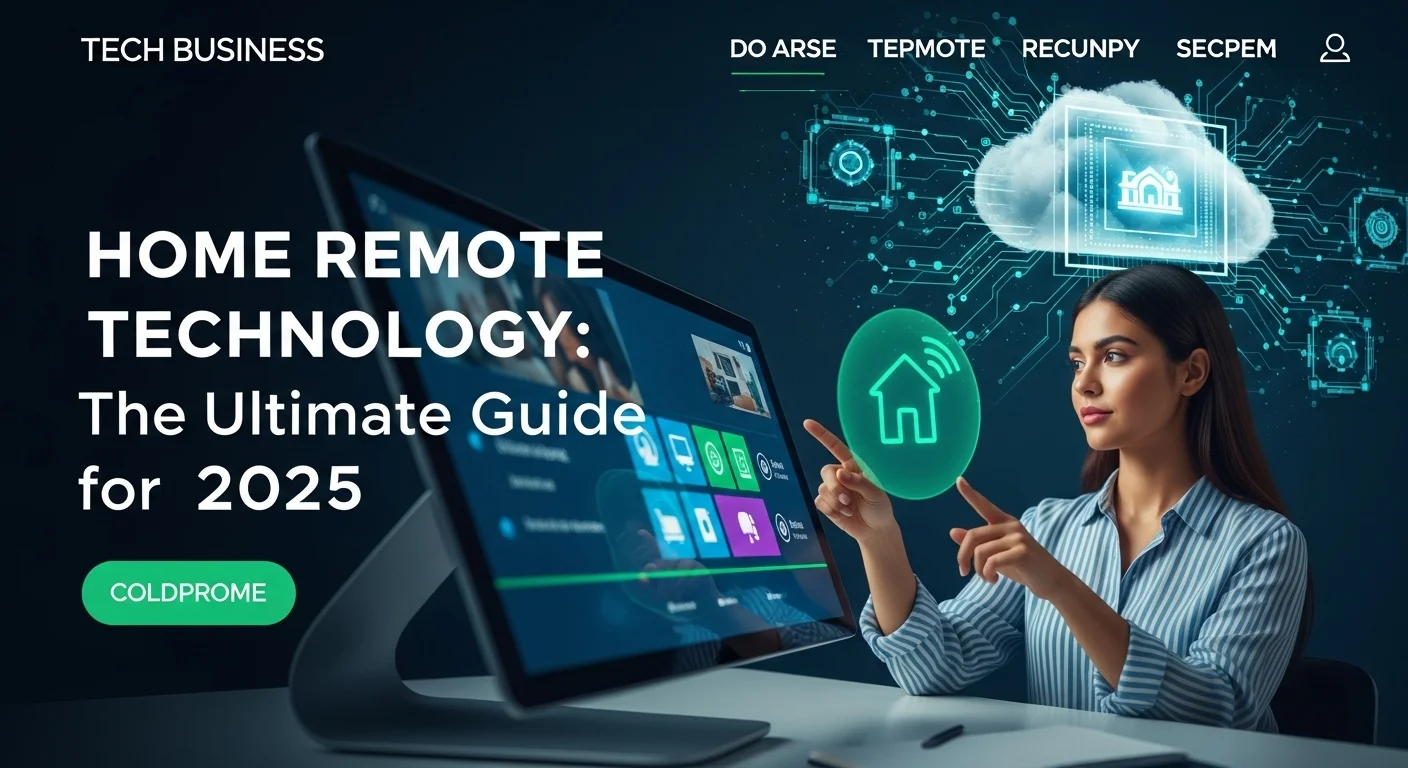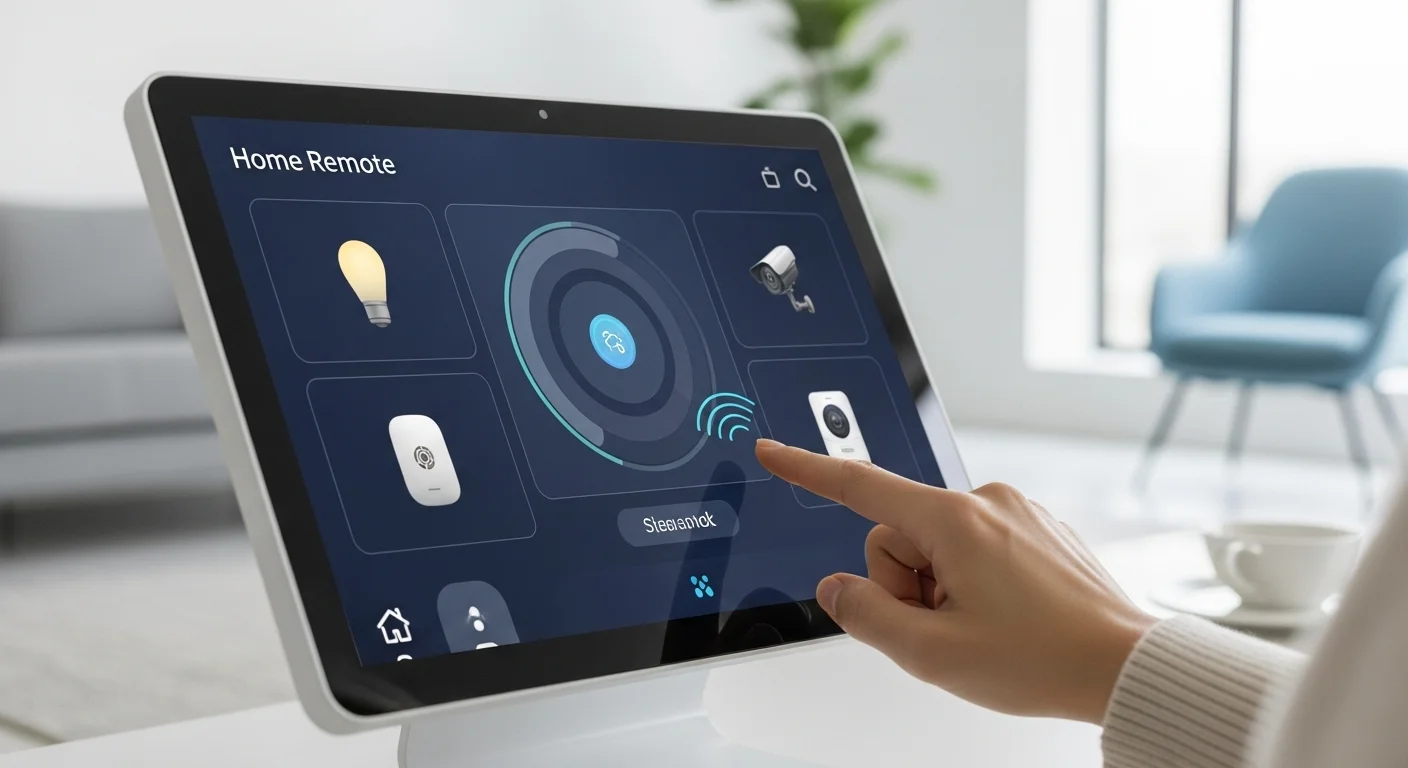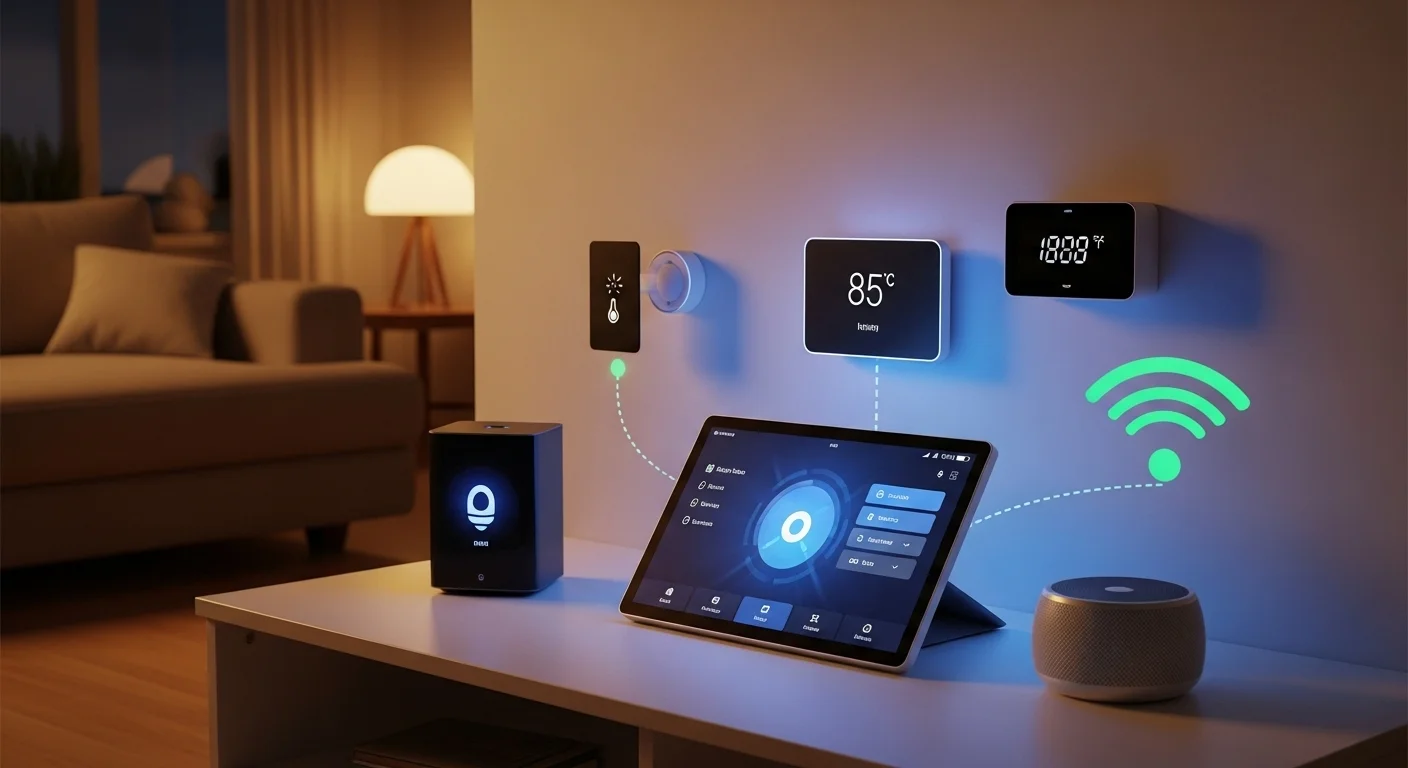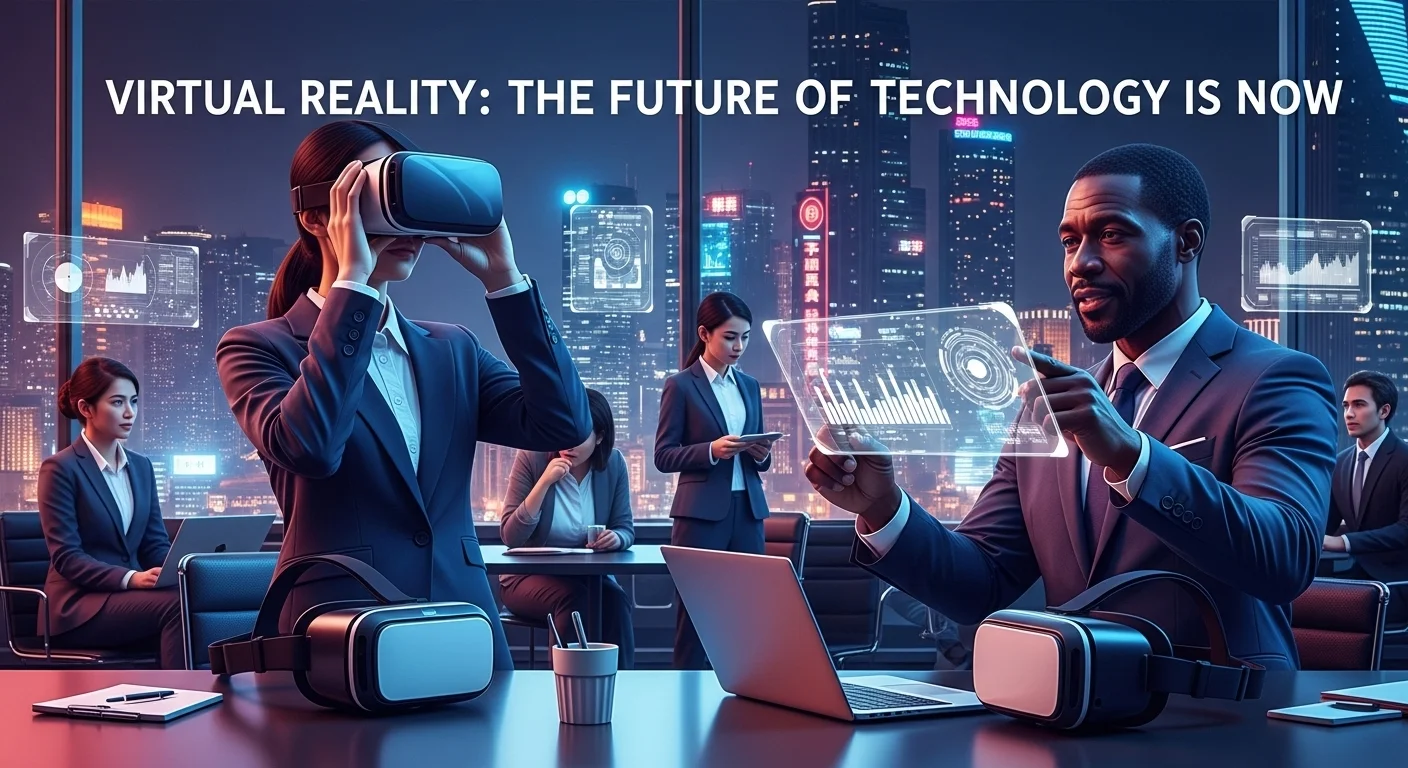Your Home, Your Rules: A Personal Guide to Home Remote Tech in 2025

Executive Summary
This isn't just another article about gadgets. It's a personal exploration of how 'Home Remote' technology has journeyed from a simple TV clicker to the intelligent heart of our homes and businesses. For years, I've watched and worked with this tech, and I've seen it transform spaces. We'll dive into the real-world magic behind it—the IoT, the cloud, and the smarts that power everything. We'll look at how it's making daily life easier and revolutionizing industries like hospitality and healthcare by boosting efficiency and security. We'll also tackle the big questions: How do you build a system that works for you? How do you keep it secure? And what does the future hold with AI and new standards like Matter? This guide is for anyone—tech lovers, homeowners, and business leaders—ready to understand and harness the power of a truly connected environment.
Table of Contents
Table of Contents
- What is Home Remote and Why Does It Matter?
- The Real Importance of a Unified Control System
- How Businesses Are Winning with Smart Automation
- A Complete Guide to Home Remote Systems
- Core Technologies: Protocols and System Design
- Smart Strategies for Business Implementation
- Getting Started: Available Resources
- Tips and Strategies for a Better Tech Experience
- Best Practices for a Secure and Reliable Smart Home
- Essential Tools and Real-World Examples
- The Future of Home Remote: What's Next?
What is Home Remote and Why Does It Matter?
The term 'Home Remote' used to mean one thing: that clunky plastic rectangle you were always losing in the sofa cushions. Today, it's something so much bigger. Think of it as the conductor of an orchestra. A modern home remote control system is the technology that lets you manage all the different electronic 'instruments' in your space from one place. And that 'place' isn't just a remote anymore; it's an app on your phone, a sleek touchscreen on the wall, a simple voice command, or even an automated schedule that runs without you lifting a finger. This technology now covers everything from your TV and lights to your thermostat, security system, and even your coffee maker, creating what we call a whole home remote control. It’s a beautiful mash-up of the Internet of Things (IoT), artificial intelligence (AI), and cloud computing that has become a true cornerstone of modern life.
I've been in this field long enough to remember the early days. The journey started way back, but the real seeds of home automation were sown with the X10 protocol in the 70s. It was revolutionary, letting devices talk to each other over a home's power lines. But let's be honest, it was often clunky and unreliable. The game truly changed when wireless tech like Wi-Fi, Bluetooth, Zigbee, and Z-Wave became common. Suddenly, we didn't need to tear open walls to run new wires. This made creating a connected home accessible to almost everyone and paved the way for the sophisticated home automation remote control systems we have today, where dozens of devices can chat seamlessly. This shift—from controlling one device to orchestrating an entire network—is why Home Remote technology is so vital now.
The Real Importance of a Unified Control System
Why does having a unified system matter so much? It's about more than just convenience. It's about sanity. In a world where every smart device wants you to use its own app, you could end up with a dozen different apps just to run your home. A unified home automation remote is the answer to that chaos. It brings everything together into one simple, intuitive interface. I've seen the look of relief on clients' faces when they realize they can program a 'Movie Night' scene that dims the lights, lowers the shades, and turns on the surround sound with a single tap. That kind of simple magic is only possible when you have a cohesive home remote control system.
But it gets even smarter. This technology is a goldmine for data that fuels AI. Every time you adjust a light or a thermostat, the system learns. A central system gathers all this data and uses it to anticipate what you need. A smart thermostat, for example, doesn't just follow a schedule; it learns your family's rhythm and adjusts the temperature to save energy while keeping you comfortable. This move from a system that just reacts to your commands to one that proactively helps you is a massive leap forward. Your whole home remote control becomes the brain of the operation, turning a collection of gadgets into a genuinely intelligent environment.
How Businesses Are Winning with Smart Automation
This technology has exploded beyond our front doors and is delivering huge value to businesses. In hotels, I've helped design systems where guests walk in and can control their entire room—lights, curtains, TV, room service—from a single tablet. It feels luxurious and massively improves the hotel's efficiency. In real estate, a pre-installed smart home package has become a major selling point. Buyers today don't just want a house; they want a connected lifestyle, including control over a home appliances remote control system.
In healthcare, the impact is even more profound. These systems help monitor the elderly, ensuring their safety with automated alerts and reminders. For someone with mobility challenges, being able to control their environment with their voice isn't a luxury; it's a new level of independence. Corporates are using the same ideas to automate boardrooms, slash energy bills in large buildings, and beef up security. The ability to manage a building remotely means fewer staff on-site for routine checks, which translates to real cost savings.
The benefits of a solid home automation remote control system are undeniable:
- Effortless Convenience: Managing dozens of devices becomes simple, saving you time and mental energy every single day.
- Serious Energy Savings: Smartly managing your lights and HVAC isn't just good for the planet; it's good for your wallet. I've seen clients cut their energy bills by up to 15% with a good smart thermostat alone.
- Peace of Mind: Integrating cameras, smart locks, and sensors into one system gives you a complete security overview. You get alerts on your phone and can even set up automations, like flashing all the lights if a smoke alarm goes off.
- Greater Independence: For the elderly and people with disabilities, these systems are life-changers, offering control and freedom.
- Personalized Living: The system learns your habits and preferences, creating an environment that feels like it was made just for you.
In short, the Home Remote has grown up. It’s now a powerful platform where hardware, software, and AI come together to make our spaces more efficient, secure, and wonderfully human-centric. Whether it's a home remote control system in your house or a massive automation network in a skyscraper, this technology is fundamentally changing how we interact with our world.

A Complete Guide to Home Remote Systems
To really get a grip on Home Remote technology, you need to look under the hood. A modern home remote control system isn't one thing; it's a team of technologies playing together. Getting it right, whether for your home or your business, means making smart choices about how it's all put together. Let's break down the technical side and business strategies to build a system that truly works.
Core Technologies: Protocols and System Design
The secret sauce of any whole home remote control system is how the devices talk to each other. This happens through wireless languages, or protocols. Think of it like this:
- Wi-Fi: This is the superhighway. It’s everywhere and has tons of bandwidth, perfect for data-hungry devices like security cameras. The downside? It can get congested if you have too many devices, and it's a bit of a power hog for battery-operated gadgets.
- Bluetooth: This is like a direct handshake. It’s great for short-range, low-power connections, like your phone unlocking your front door. It's not designed to cover a whole house by itself.
- Zigbee & Z-Wave: These are the neighborhood watch team. They are low-power and create a 'mesh network,' where devices can pass messages to each other. If one device can't reach the main hub, another one will help relay the message. This makes the network super reliable and extends its range. The main difference I've seen in practice is that Z-Wave's certification process guarantees all its devices play nicely together, which can be a huge plus.
- Thread: This is a newer protocol that's also a low-power mesh network. Its superpower is that it's IP-based, meaning every device can have its own internet address, making them easier to connect directly to the cloud without a complicated setup.
- Matter: This is the universal translator everyone's been waiting for. It’s not a language itself but a standard that sits on top of Wi-Fi and Thread. Developed by giants like Apple, Google, and Amazon, Matter's goal is to make all certified smart devices work together, no matter who made them. In my experience, this is the single biggest development that will eliminate the headache of device incompatibility for good.
Then you have to decide on the system's brain. There are three main ways to set up a home automation remote control system:
- Cloud-Based: Your devices talk to servers on the internet. This is great for easy remote access from anywhere. The downside? If your internet goes down, your smart home gets a lot less smart. It also means your data lives on someone else's server.
- Local/Hub-Based: A physical hub in your home runs the show. This is my preferred setup for critical functions. It’s faster, more private, and works even when the internet is out. Professional systems and DIY platforms like Home Assistant excel here.
- Hybrid: This is the sweet spot and the most common model today. A local hub handles the day-to-day operations for speed and reliability, but it also connects to the cloud for remote access and cool voice-assistant features. You get the best of both worlds.
Smart Strategies for Business Implementation
For any business stepping into this space, either as an installer or a user, strategy is everything.
- Start with 'Why': Before you buy a single device, figure out what you want to achieve. Better security? Energy savings? A killer customer experience? Your 'why' determines which platform is right for you. For that top-tier, custom-tailored experience in a luxury home or corporate boardroom, you'll be looking at professional-grade systems like Crestron, Savant, or Control4. I've worked with them all; Crestron is the ultimate in customization, Savant is known for its beautiful user experience, and Control4 hits a great balance of power and value.
- Plan for Growth: A successful whole home remote control system is built to grow. You need a platform that can easily integrate everything—lighting, security, AV, and even your home appliances remote control system. The key is choosing a system with a strong community and lots of supported devices. You don't want to be locked into a dead-end platform.
- Focus on the Experience: I can't stress this enough: the most powerful system is useless if people hate using it. The interface has to be dead simple. For a hotel, this directly impacts guest reviews. For a homeowner, it's the difference between joy and frustration. The best tech is the tech you don't even have to think about.
Getting Started: Available Resources
There's a solution for every budget and skill level:
- DIY Route: For the tech-savvy, platforms like Home Assistant are a dream. They are open-source, run on cheap hardware, and give you ultimate control and privacy. Be prepared to roll up your sleeves; it's a hobby in itself.
- Consumer Ecosystems: Apple HomeKit, Amazon Alexa, and Google Home are fantastic entry points. They're easy to set up and have tons of compatible devices. Just remember they are mostly cloud-dependent and less customizable for complex automations.
- Professional Installation: If you want a truly bulletproof whole home remote control system that just works, hire a pro. An integrator will design and install a system from brands like Control4 or Savant that is tailored perfectly to your needs. It's a bigger upfront investment, but for complex projects, it's worth every penny for the peace of mind.
Ultimately, building a great Home Remote solution is about making smart choices that fit your goals. By understanding the tech and planning strategically, you can create an environment that's not just connected, but truly intelligent and intuitive.

Tips and Strategies for a Better Tech Experience
Putting together a home remote control system is about more than just plugging things in. It's about building an ecosystem that's secure, reliable, and genuinely makes your life better. After years of setting these up, I've learned a few things that can make all the difference. Here are my top tips and a look at what's coming next.
Best Practices for a Secure and Reliable Smart Home
The convenience of a whole home remote control is amazing, but you have to be smart about security. An unsecured system is an open door for trouble.
- Fortify Your Network: Your Wi-Fi network is the front door to your smart home. Lock it down. Use a strong, unique password with WPA3 encryption. My number one tip for anyone serious about this is to create a separate network (a VLAN) just for your IoT devices. This keeps them isolated from your personal computers and phones. If a hacker ever compromises a smart light bulb, they can't get to your sensitive data.
- Ditch Default Passwords & Use 2FA: Every IoT device comes with a default password that's a quick Google search away for a hacker. Change it immediately. Then, turn on Two-Factor Authentication (2FA) for your main control system account. It's a tiny bit of extra effort that adds a massive layer of security.
- Update, Update, Update: Manufacturers are constantly releasing updates to fix security holes and improve how things work. Turn on automatic updates for your hub, apps, and devices. An outdated home automation remote control is a vulnerable one.
- Build for Reliability: What happens when your internet dies? If your whole system is cloud-based, it dies too. I always recommend a hybrid system with a local hub for this reason. Your lights and security will still work no matter what's happening with your internet provider. A small Uninterruptible Power Supply (UPS) for your router and hub is also a cheap and easy way to keep things running during a short power blip.
- Start Smart, Think Big: You don't have to automate your entire house overnight. Start with one room or one task, like lighting control. Get comfortable with it, see what you like, and then expand. Just make sure the platform you choose can grow with you, whether you're adding to your home appliances remote control system or installing smart shades next year.
Essential Tools and Real-World Examples
For businesses in this space, having the right tools and focusing on the customer journey is key.
- Pro-Level Design Tools: The pros don't just guess. We use software to map out networks, plan device placement, and document every part of a complex system. This ensures a flawless installation and easy maintenance down the road.
- Real-World Win: The Smart Hotel: I worked on a project for a boutique hotel that put a home automation remote in every room via a simple tablet. Guests could control everything—lights, shades, TV, thermostat—and even order room service. The best part? The system was tied into the hotel's booking software. When a guest checked out, the room automatically went into an energy-saving mode, turning off lights and adjusting the heat. The guests loved the high-tech feel, and the hotel saved a bundle on its energy bills. It was a huge win-win.
- Essential External Resource: If you want to understand the future, you have to understand Matter. The Connectivity Standards Alliance website has all the official details. For a simple, clear explanation, search for videos from trusted tech reviewers on YouTube who break down what Matter means for you and the devices you'll be buying.
The Future of Home Remote: What's Next?
The home remote control system we know today is just the beginning. The future is less about control and more about intelligence.
- Proactive AI: Get ready for a home that doesn't just obey commands but anticipates your needs. Imagine your house seeing your car is 10 minutes away on a cold day and starting to warm up for your arrival. Or noticing you've been reading for a while and adjusting the light to reduce eye strain. This is where AI will take us—from a smart home to a caring one.
- Ambient Computing: The ultimate dream is to have the technology disappear completely. This is 'ambient computing,' where intelligence is woven into the fabric of your home. No more reaching for a phone or shouting commands. The environment will just... respond to you. It's the closest we'll get to real-life magic.
- Health and Wellness Integration: Our homes will become active partners in our health. Air quality sensors will talk to air purifiers, lighting will sync with our body's natural circadian rhythms to help us sleep better, and data from our fitness trackers could tell the home how to create a more restorative environment after a workout.
To get the most out of Home Remote technology, you need to be strategic. By focusing on security, planning carefully, and always putting the human experience first, you can unlock the incredible potential of a whole home remote control. We're on a journey from simple remotes to truly intelligent spaces that will make our lives easier, safer, and more enjoyable.
Expert Reviews & Testimonials
Sarah Johnson, Business Owner ⭐⭐⭐⭐
As a small business owner, I found this really insightful. I wish there were a few more specific case studies for retail, but the section on hospitality gave me some great ideas. Solid overview!
Mike Chen, IT Consultant ⭐⭐⭐⭐
Great deep dive into the tech. As an IT guy, I appreciated the breakdown of protocols like Zigbee vs. Z-Wave. It clarified a lot for me. Could be a tad simpler for total beginners, but perfect for my level.
Emma Davis, Tech Expert ⭐⭐⭐⭐⭐
This is hands-down one of the best guides I've read on home automation. It's comprehensive without being overwhelming. It's going straight into my 'favorites' for my specialization work. Fantastic job!



